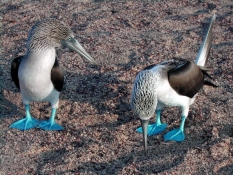Queens
College/CUNY
Education Unit
Fall 2012
Science Content Recommendations from NCATE and NSTA
| Elementary - generalist | Elementary - middle | All Secondary | Secondary - Biology | Secondary - Chemistry | Secondary - Earth, Space | Secondary - Physics |
C.4. Recommendations for Teachers of the Earth and Space Sciences
C.4.a. Core Competencies . All teachers of the Earth and space sciences should be prepared lead students to understand the unifying concepts required of all teachers of science, and should in addition be prepared to lead students to understand:
- Characteristics of land, atmosphere, and ocean systems on Earth.
- Properties, measurement, and classification of Earth materials.
- Changes in the Earth including land formation and erosion.
- Geochemical cycles including biotic and abiotic systems.
- Energy flow and transformation in Earth systems.
- Hydrological features of the Earth.
- Patterns and changes in the atmosphere, weather, and climate.
- Origin, evolution, and planetary behaviors of Earth.
- Origin, evolution, and properties of the universe.
- Fundamental processes of investigating in the Earth and space sciences.
- Sources and limits of natural resources.
- Applications of Earth and space sciences to environmental quality and to personal and community health and welfare.
C.4.b. Advanced Competencies . In addition to the core competencies, t eachers of the Earth and space sciences as a primary field should be prepared to effectively lead students to understand:
- Gradual and catastrophic changes in the Earth.
- Oceans and their relationship to changes in atmosphere and climate.
- Hydrological cycles and problems of distribution and use of water.
- Dating of the Earth and other objects in the universe.
- Structures and interactions of energy and matter in the universe.
- Impact of changes in the Earth on the evolution and distribution of living things.
- Issues related to changes in Earth systems such as global climate change, mine subsidence, and channeling of waterways.
- Historical development and perspectives in the Earth and space sciences, including contributions of significant figures and underrepresented groups, and the evolution of theories in these fields.
- How to design, conduct, and report research in the Earth and space sciences .
- Applications of the Earth and space sciences and related technologies in society, business, industry, and health fields.
C.4.c. Supporting Competencies . All teachers of Earth and space sciences should be prepared to effectively apply concepts from other sciences and mathematics to the teaching of Earth and space sciences including concepts of:
- Biology, including evolution, ecology, population dynamics, and the flow of energy and materials through Earth systems.
- Chemistry, including broad concepts and basic laboratory techniques of inorganic and organic chemistry, physical chemistry, and biochemistry.
- Physics, including electricity, forces and motion, energy, magnetism, thermodynamics, optics, and sound; as well as basic quantum theory.
- Mathematics, including statistics and probability.
